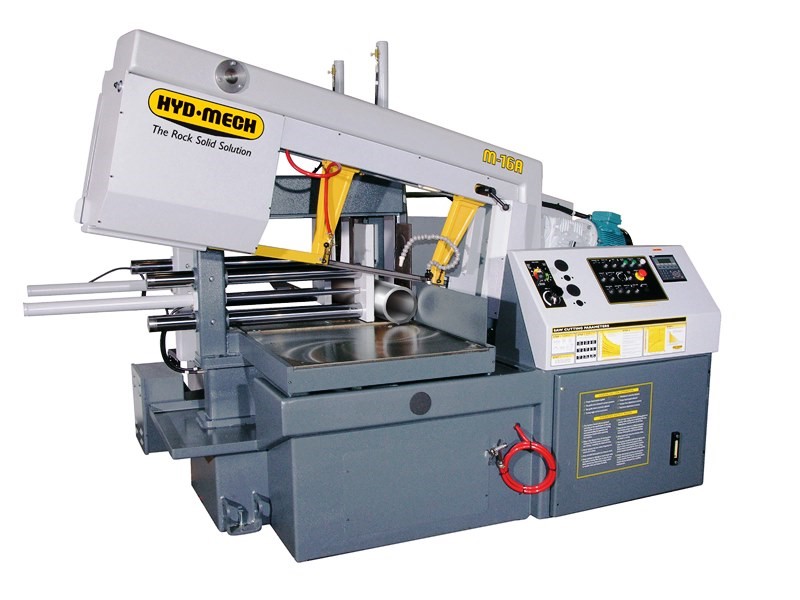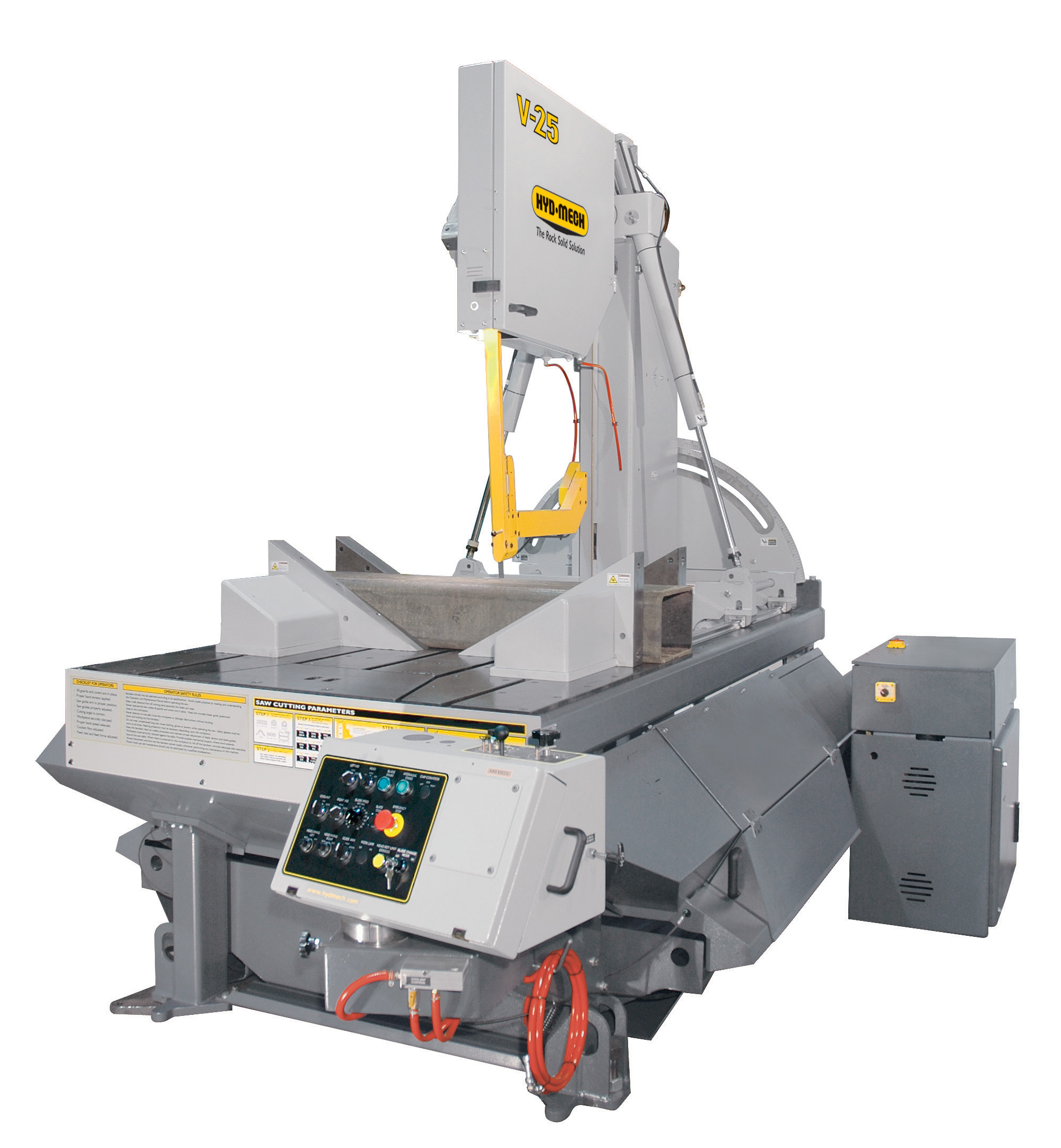A bandsaw is a power saw with a long, sharp blade consisting of a continuous band of toothed metal stretched between two or more wheels to cut material. They are used principally in woodworking, metalworking, and lumbering, but may cut a variety of materials. A band saw can be used to cut curves, even in thick lumber, such as in creating cabriole legs, to rip lumber, and to crosscut short pieces. The band saw is also a dangerous woodworking tool, one that can cause considerable injury if used improperly. Band saws are often the most efficient metal removal machine tools in a shop so every metal shop should have bandsaws. There are many different types of Bandsaws, today we’ll focus on Horizontal and Vertical Bandsaws which both have their advantages and disadvantages, as well as specific uses.

Horizontal Bandsaws are used to cut larger pieces of metal, typically only cutting squares with an occasional miter. A horizontal band saw operates by holding your workpiece stationary while swinging the band saw blade through it, performing a precise cut. This configuration is used to cut long materials such as pipe or bar stock to length. Generally, the horizontal saw is used to saw steel and other hard materials. The horizontal band saws are extremely quiet to operate compared to other power tools, and it also creates less mess. They are versatile in what stock they can cut; they also don’t have any issues with wood, metal, or plastics. It can be set up to cut automatically and it can work without supervision. Inside the horizontal band saw is the blade that moves to cut the material, using the widest blade possible for the job. Though they are versatile in what stock they can cut, a horizontal band saw will not be able to give curved lines or complicated shapes like the vertical band saw. Horizontal band saws are quite large so it is not ideal for home workshops that don’t have much room for equipment.

Vertical Bandsaws are more suited to cut intricate pieces, structural parts, and fixtures. It is also known as a counter saw because the blade is kept stationary and the workpiece is moved periodically across it. It also performs metal removal jobs that save time and material. A vertical band saw is used for soft plastics, wood, and non-ferrous metal alloys. Vertical band saws are small in size and require less power. Since it cuts differently through the material than a horizontal saw, it is the power tool of choice for performing complicated cuts, shapes, and angles, as well as other capabilities such as polishing and filing. Since it has a small size unlike horizontal band saws, it is used in homes and smaller shops. Vertical band saws have many styles and have a built-in air blower to keep the blade cool and remove chips from the work area, making it a fuss-free machine. Although due to its design and need to feed the workpiece into the blade, vertical band saws aren’t as safe, resulting in more risk of workshop injuries than its counterpart. Because it can’t clamp on both sides of the stock like a horizontal saw can, this can result in a cut that isn’t as precise. Vertical band saw is ideal for hobbyist or smaller scale workshops due to its ability to perform intricate cuts and it’s a wider variety of capabilities.
If you’re interested in buying a Horizontal or Vertical Bandsaw, please look through our used Bandsaw inventory. Sort by Horizontal saws, Vertical Bandsaws, Plate Saws and Miter Saws. Contact us today and we’ll guarantee that we can help you find the right bandsaw that’s perfect for your application.